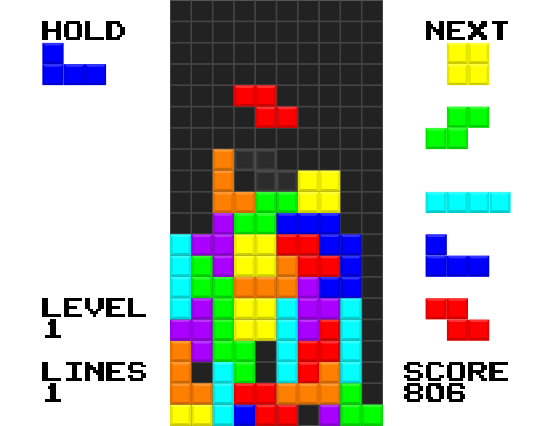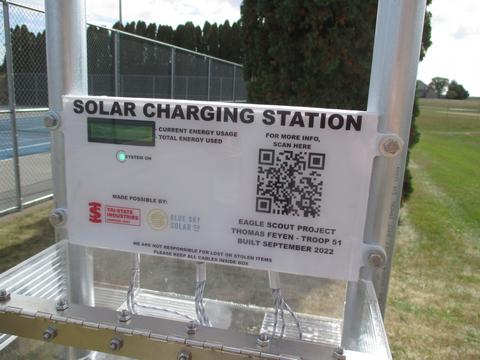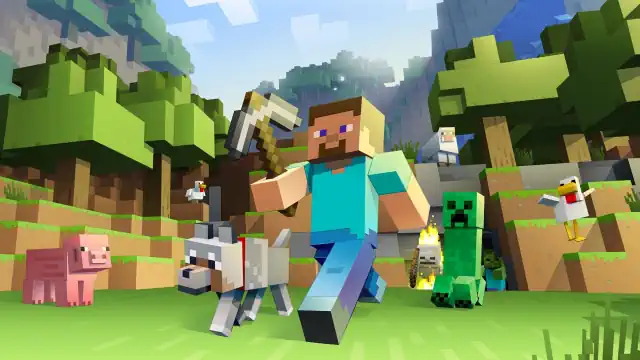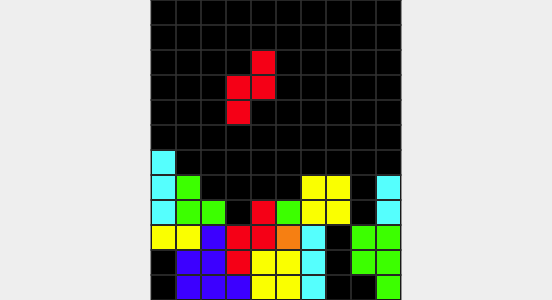- Fill out this contact form
- Email myself at oranges@orangeisbetter.net
- Email Dave Fangman at dave@wdfenterprises.com
- Email: sburke@cityofasbury.com
- Phone: (563) 556-7106
Images







Usage FAQ
-
Q. What cable types are installed?
A. The types of cables I have installed are Micro USB, Lightning, and USB-C. Please note that there are 3 of each of these cables. If all the type for your phone are currently in use, please be patient! Be nice and respect other people's devices. -
Q. How do I use the Solar Charging Station?
A. Just plug your device into one of the available charging cords, and watch your device charge! -
Q. My device is plugged in, but is not charging. Why is my device not charging?
A. The Solar Charging Station might be temporarily turned off. Check to make sure the green light is turned on, and then try again. You might need to wait for the battery to charge a little before you can use it again. -
Q. What does the green light on the front mean?
A. The green light lights up when the Solar Charging Station is turned on. If this light is turned off, it means that the Solar Charging Station is currently turned off. This is most likely because the battery is dead. If the battery is dead, wait for the battery to charge, and then come back later. -
Q. What do the numbers on the display mean?
A. The top row shows the current amount of power usage, in watts (W). The bottom row shows the total amount of power that the Solar Charging Station has generated, in either watt hours (Wh) or kilowatt hours (kWh). -
Q. Why are the cable covers not on the cables? Should I put them back on?
A. That is a great question! I can understand why people might be tempted to leave the covers off, because it's almost impossible to distinguish the cable types with the covers in place. If you feel like replacing the covers, feel free to do so. If there is heavy precipitation in the near forecast, please replace the covers when you are done.
If you have any other questions, feel free to contact me through the use of this contact form.
Iowa Energy Statistics for 2020
Energy sources are sorted by their respective contribution to the total power generation.
| Power Source | Generated Power (MWh) | Percent of Total |
|---|---|---|
| Wind | 34,182,302 | 57.32% |
| Coal | 14,146,835 | 23.72% |
| Natural Gas | 7,036,824 | 11.80% |
| Nuclear | 2,904,863 | 4.87% |
| Hydro | 1,025,215 | 1.72% |
| Other | 207,440 | 0.35% |
| Petroleum | 111,111 | 0.19% |
| Solar | 22,082 | 0.04% |
| Total | 59,636,672 | 100.00% |
Source: Iowa Utilities Board
How It Came To Be
This project has been an idea ever since around summer of 2021. From initial idea to final product, there were many hardships and struggles that came about with it. To say I learned a lot over the course of making it would be an understatement. It all started when I was trying to think of an idea for an Eagle Scout Project. As a self-taught electrical engineer and programmer, I knew I didn't want to make a stereotypical Eagle Scout Project, like benches or a pavilion, because those have been done many, many times before. I wanted to do something original. Something out of the ordinary. Something that would not only be beneficial to the community, but also to spread the word about something I'm passionate about.
The first thing I thought of was planting trees, because planting trees is good for the environment. Trees help to reduce carbon dioxide (CO2) in the atmosphere. I then thought about it, and it occurred to me that that had already been done multiple times before, and planting trees doesn't really solve the problem of CO2 being in the atmosphere in the first place. I thought longer, and then I realized I needed to tackle this problem from another angle. Instead of trying to take the existing CO2 out of the air, I should really be working to reduce the amount of CO2 that gets released into the air in the first place. I thought about doing something solar powered, which eventually evolved into the charging station you see.
The Engineering Design Process is a process in which a design is conceptualized, and through many stages, it eventually gets released as a final product. It goes mostly like this:
- Identify the problem you are trying to solve. This can be an idea, or just a general problem. In my case, this was the problem of too much carbon emissions.
- Do research. This is one of the most important steps in this process, and its purpose is to search for possible solutions, and to see if someone has already solved the same problem before you. It would really suck to spend years trying to solve a problem that doesn't even exist anymore.
- Brainstorm possible solutions. Originally, I wanted to construct the structure out of wood. It might have been cheaper but would not have as much quality as building it out of metal.
- Make a prototype. You can't make anything good without first making a prototype. I bought a cheap solar panel on Amazon (5 Watt), and I started to design around it. I soon realized that the solar panel I purchased would not be anywhere near powerful enough to power the charging station, so I bought a more powerful one (This time 25 Watt). This is an example of redesigning and re-prototyping. You keep trying things until something works.
- Test the solution. After making the initial custom PCB (Printed Circuit Board), I tested it as much as I could, by plugging many things into it to simulate heavy loads. Using the results of the tests, I redesigned the PCB.
- If the solution works, great! Make it final. If not, or if there are a few problems with it, go back to step 4 and redesign.
I could spend hours talking about the hiccups I had along the way of doing this project, but I won't bore you with the details.
Special Thanks and Contributions
A huge thanks to the following companies and organizations:
- Blue Sky Solar Co.
- Tri-State Industries
Another huge thanks to all the individuals who helped with this project:
- Isaac Bodensteiner
- Joah Breitbach
- George Woodhouse
- Pierce MisiagBeckler
- Amon Beckler
- Mike Breitbach
- Reed Whitaker
- Jack Poster
- Payton Poster
- Isaac Poster
- John Morarend
- Chad Morarend
- Dave Fangman
A special thanks to my grandparents for their generous donation to the project, to my family, friends, and anyone else that motivated me to complete this project.
The Specifics
If you want to build something like a solar charging station, or want to know how I did it, here are some links to the things I used to make this one (non-affiliate):
Online Orders:
- [amazon.com] 12v 9ah Lead Acid Batteries
- [amazon.com] 30A Solar Charge Controller
- [amazon.com] 25 Watt 12v Solar Panel
- [amazon.com] 12v Lead Acid Battery F2 Terminal Conenctor Cable
- [amazon.com] Multi Charging Cables
- [ebay.com] ATMega328P-PU Microcontroller IC
- [ebay.com] 5v Yellow-Green 16x2 LCD
- [ebay.com] DC-DC Step Down Buck-Boost Converter
- [ebay.com] 25 Ft 14 AWG Wire
Custom PCB Files:
3D Printed Parts Files:
Full 3D Model:
If you have any other questions, feel free to contact me through the use of this contact form.
Solar Charging Station
by
Thomas Feyen
is licensed under
CC BY-NC-SA 4.0





